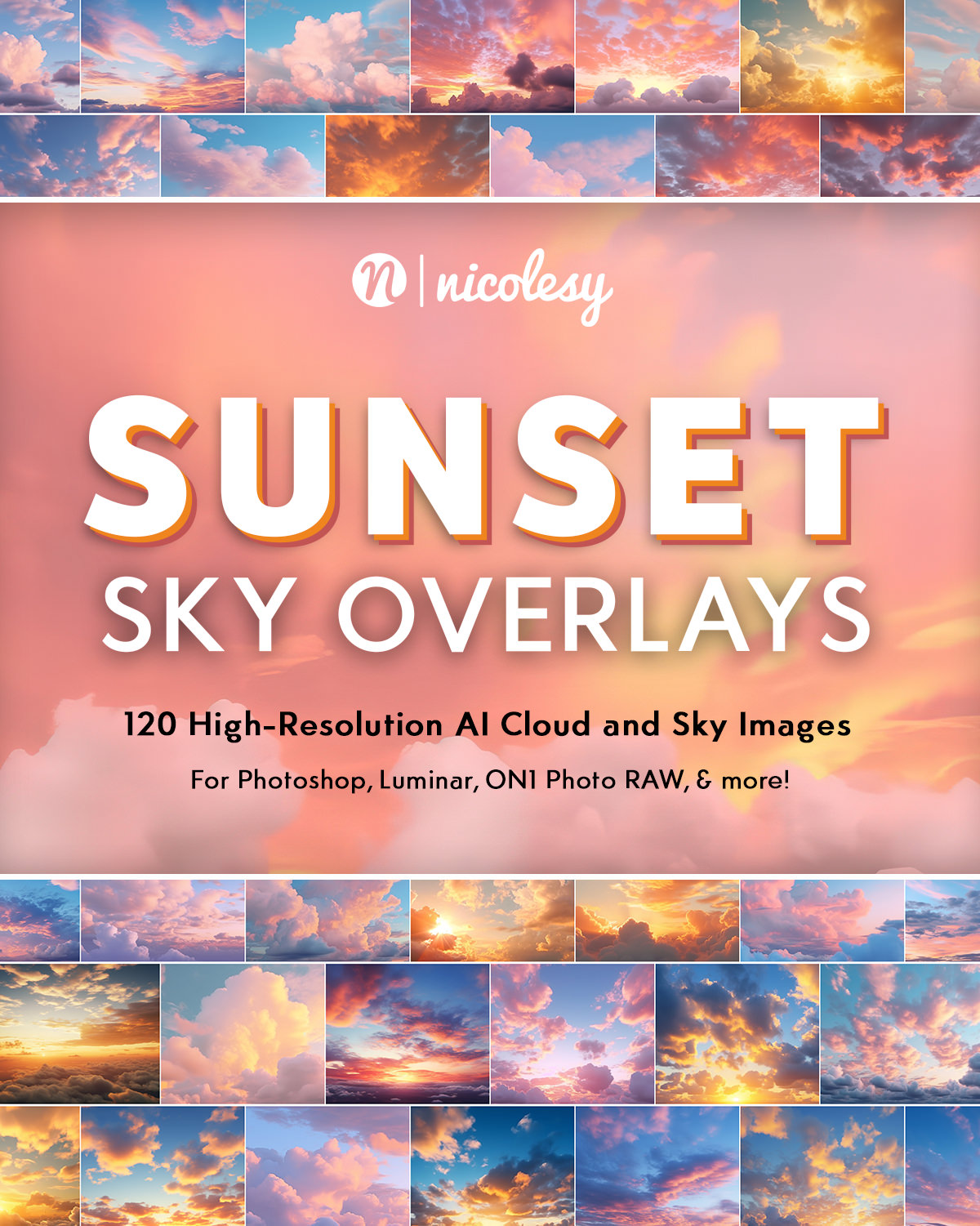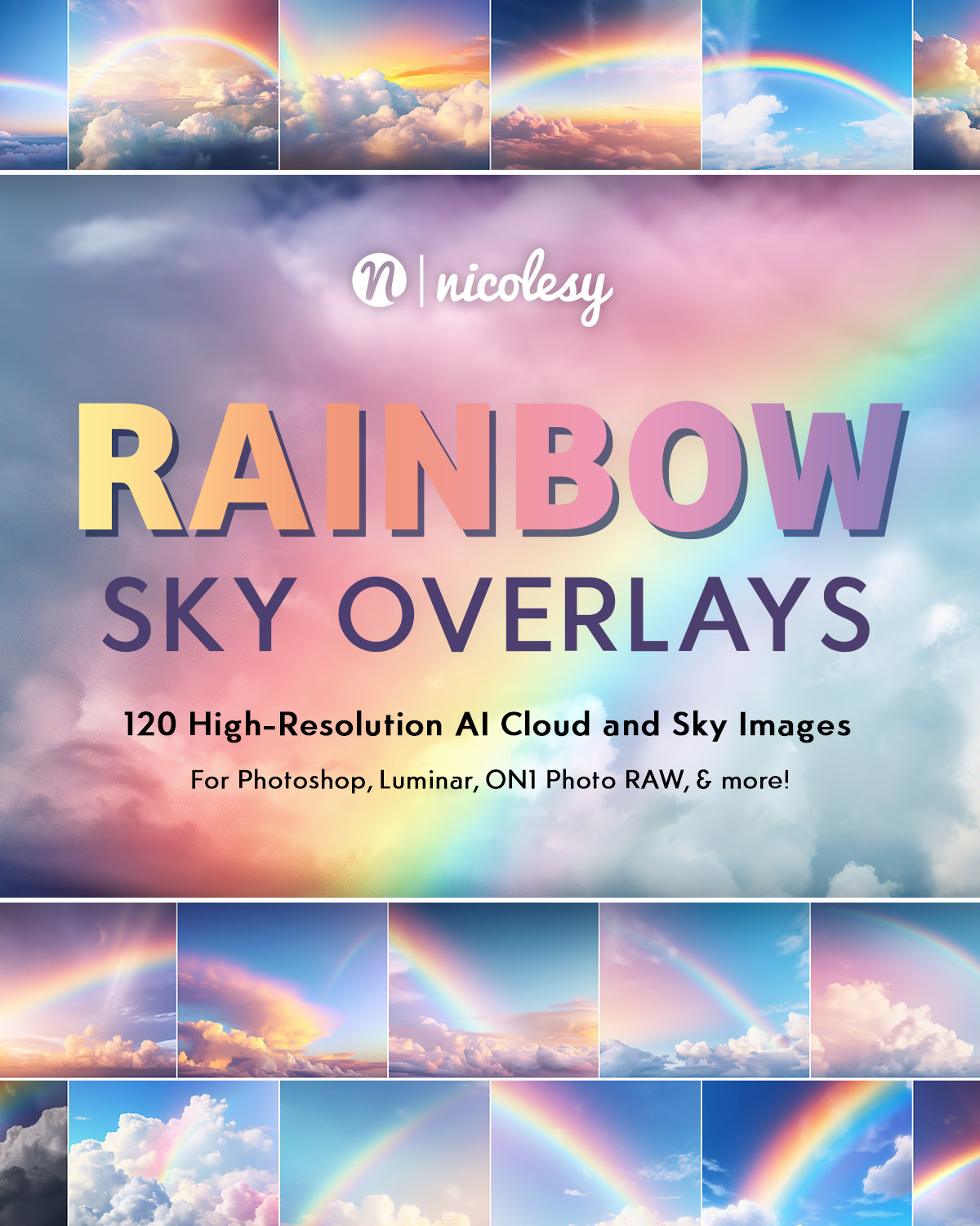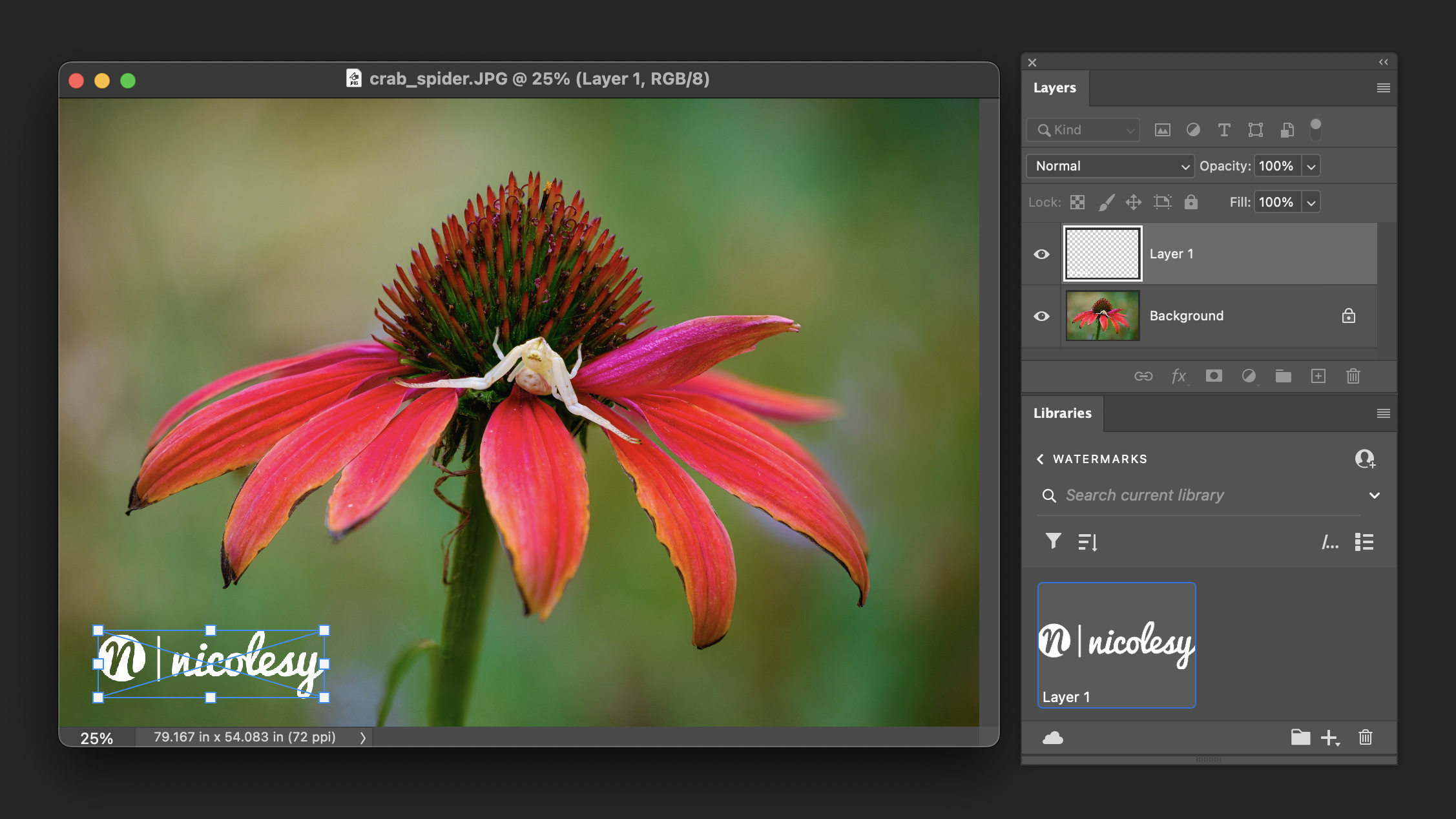A few months ago I published my third self-published eBook, and I’m currently working on my fourth. My full-time profession is considered to be “photographer”, but the “author” in me keeps growing and it feels like I spend way more time writing and creating educational content than I do holding a camera. At the time of writing this article I have had eleven books published, all “how-to” and inspirational books about photography. As an experienced author and successful self-publisher, I thought I would share some insight on what it takes to take your own idea and get it out there “in print” for the world to see.
In terms of content, I won’t get into the details of what you should write or how you should present that information; that will be for you to determine. This article is about the process of what to do after all the words are written and organized. This is only one method, primarily the method I use, so keep in mind that there are definitely other ways to go about doing this.
Hire an editor
I cannot stress this enough. If your book has words in it, someone else should edit it for you. I would never even consider publishing and selling an eBook without having someone else look at its contents, preferably a professional who was hired specifically for the task of editing.
The next question that I’m sure is on the tip of your brain is this: how much do editors cost? If you expect to make money from your eBook then paying for an editor is a no-brainer, and the cost should be considered an investment into the quality of your book. You may want to consult with the Editorial Freelancers Association website, which has lists of standard rates for freelance editing work. For my eBooks I have generally paid around $500-750 for freelance editing work depending on the amount of words and pages in my books.
If cost is an issue for you and you’re on a very tight budget, consider crowd-sourcing your editing by having people beta-test the book for you. I got the idea from the book APE: Author, Publisher, Entrepreneur, by Guy Kawasaki and Shawn Welch (an excellent resource for anyone who wants to self-publish, BTW). For my first “for-sale” eBook in my store I tried it out (after I had also worked with my editor), and got a lot of great feedback. I’ll warn you, though, it is possible to get too much feedback. Even if you only ask for a certain type of editing from your beta-testers, such as “please look for spelling mistakes”, you will certainly get opinions about other things (paragraph structure, grammar, content, etc.). But having a lot of eyes on your manuscript is a guarantee that they will find a lot of the little things that you may have missed.
Decide on a format
When I write my eBooks, I always intend them to be in PDF format. I want them to be beautiful and elegant, and look like a “real” book when my customers are reading them on their computer or mobile device (tablet, phone, etc.). Here are the different types of formats and some of their pros and cons:
- PDF: The advantage to a PDF is that you can control every element of what and where things are placed, such as font size, font type, and overall design. You can also choose the type of software that you use to create it, such as InDesign, MS Word, Pages, and even Lightroom (yes, Lightroom!). There are a lot of options out there so its a good idea to do you research and use the method that works best with your workflow.
- iBooks: This format is similar (in terms of control over design), but you are required to use specific software to create it and it is only compatible with iOS and Mac devices.
- ePub/Mobi: These are the standard “eBook” formats, mostly used for books with a lot of text, such as novels or textbooks. If you are interested in a more simple format, you may want to consider using one of these format (for use in Kindles or e-readers). However for many of the photography books that I use, this format just does not work. Design and layout are very important to me, so I have chosen not to go this route. It is a much less involved process, and very likely is less expensive to hire out than to have someone design a full book using InDesign (if you don’t do it yourself).
If you are looking for a company to work with to convert your eBook, I would recommend Ebook Design Works. They helped work with me on the ePub and Mobi conversion for one of my books and it was a very smooth process.
Hire a designer (if necessary)
The content of your eBook is the most important part. However, as an artist, I have to say that its design is almost just as important. I absolutely love the design process, figuring out layout, and choosing fonts and colors. With the types of eBooks I write, I want my entire book to be a work of art, and so making the design mesh with my vision and what I am teaching is integral to what I do.
I throw that “if necessary” statement into this section, because I prefer to design my own eBooks. I’ve been criticized about this by other self-published authors, but those are from “text” authors (not artist/photographer authors, like me) and I don’t think that they ever laid eyes on my finished product. I have a solid background in art and photography, and I also view my eBook as a work of art. For me, handling the design is a no-brainer; I love the control and flexibility it allows, but I’ll be honest that it is definitely time-consuming.
Get an ISBN
An ISBN is not a requirement to sell an eBook on your own, but if you want your book published through Amazon (for example) then you will need to have one. I put ISBNs on all of my books that I self-publish, and I think that the addition of a bar-code on the back cover can add a nice professional touch. You can obtain an ISBN through Bowker, and if you purchase more than one at a time then you can save a lot of money (which is good if you plan on publishing more than one eBook down the road). https://www.myidentifiers.com/
Copyright your eBook
When everything is complete it’s a smart idea to submit your eBook to the US Copyright office and register it. It’s just smart to have an extra layer of protection for your finished works, especially if you rely on it for your income!
Decided how to distribute your eBook
To sell or give away your eBook, you have a few options. First, you can have other people market and sell your book for you. The biggest platform out there for eBooks is Amazon’s Kindle Direct Self Publishing. Now, this is only an option for you if your book is in the MOBI format, as they do not (for some reason) allow people to sell PDFs. You can get more information over on their website to find out how all of that works.
Apple iBooks is another good option, especially for rich-media content (adding video clips, interactive graphics, etc.). The iBooks Author software is relatively simple to use; I’ve played around with it myself, but, to be honest, I have no real experience publishing a book in this format.
Another option is to go at it on your own. Since most of my eBooks are PDF I choose to use my very own platform for selling my eBooks: my online store. I’ve tested the waters with having other resellers distribute my eBooks, but decided early on that the best place for me to sell my work was on my website. I have a brand that I’m trying to maintain, and if my readers like my style of writing, teaching method, presentation, and (of course) my photography, then they will come back and find more of my products because there is already an expectation of quality. I also get to keep 100% of the profits, which is pretty darn good (especially if your book does well!).
If you do choose to sell your own work, then you’ll need to use some type of shopping cart software to make the transaction and get the goods to your customers. In my opinion, a good option to start with is e-Junkie. They are inexpensive, you can embed buttons directly to your blog, and are a good option if you don’t want a dedicated eCommerce store.
Create a campaign and spread the word!
Once your eBook is ready to be published you’ll need to spread the word somehow. This can be through a newsletter list, social media, or even a blog post. And, if your selling platform allows it, you can also set up an affiliate program to have others help spread the word as well!
If you would like to view some of my self-published works, please take a look at the eBooks over in my online store.
A few months ago I published my third self-published eBook, and I’m currently working on my fourth. My full-time profession is considered to be “photographer”, but the “author” in me keeps growing and it feels like I spend way more time writing and creating educational content than I do holding a camera. At the time of writing this article I have had eleven books published, all “how-to” and inspirational books about photography. As an experienced author and successful self-publisher, I thought I would share some insight on what it takes to take your own idea and get it out there “in print” for the world to see.
In terms of content, I won’t get into the details of what you should write or how you should present that information; that will be for you to determine. This article is about the process of what to do after all the words are written and organized. This is only one method, primarily the method I use, so keep in mind that there are definitely other ways to go about doing this.
Hire an editor
I cannot stress this enough. If your book has words in it, someone else should edit it for you. I would never even consider publishing and selling an eBook without having someone else look at its contents, preferably a professional who was hired specifically for the task of editing.
The next question that I’m sure is on the tip of your brain is this: how much do editors cost? If you expect to make money from your eBook then paying for an editor is a no-brainer, and the cost should be considered an investment into the quality of your book. You may want to consult with the Editorial Freelancers Association website, which has lists of standard rates for freelance editing work. For my eBooks I have generally paid around $500-750 for freelance editing work depending on the amount of words and pages in my books.
If cost is an issue for you and you’re on a very tight budget, consider crowd-sourcing your editing by having people beta-test the book for you. I got the idea from the book APE: Author, Publisher, Entrepreneur, by Guy Kawasaki and Shawn Welch (an excellent resource for anyone who wants to self-publish, BTW). For my first “for-sale” eBook in my store I tried it out (after I had also worked with my editor), and got a lot of great feedback. I’ll warn you, though, it is possible to get too much feedback. Even if you only ask for a certain type of editing from your beta-testers, such as “please look for spelling mistakes”, you will certainly get opinions about other things (paragraph structure, grammar, content, etc.). But having a lot of eyes on your manuscript is a guarantee that they will find a lot of the little things that you may have missed.
Decide on a format
When I write my eBooks, I always intend them to be in PDF format. I want them to be beautiful and elegant, and look like a “real” book when my customers are reading them on their computer or mobile device (tablet, phone, etc.). Here are the different types of formats and some of their pros and cons:
- PDF: The advantage to a PDF is that you can control every element of what and where things are placed, such as font size, font type, and overall design. You can also choose the type of software that you use to create it, such as InDesign, MS Word, Pages, and even Lightroom (yes, Lightroom!). There are a lot of options out there so its a good idea to do you research and use the method that works best with your workflow.
- iBooks: This format is similar (in terms of control over design), but you are required to use specific software to create it and it is only compatible with iOS and Mac devices.
- ePub/Mobi: These are the standard “eBook” formats, mostly used for books with a lot of text, such as novels or textbooks. If you are interested in a more simple format, you may want to consider using one of these format (for use in Kindles or e-readers). However for many of the photography books that I use, this format just does not work. Design and layout are very important to me, so I have chosen not to go this route. It is a much less involved process, and very likely is less expensive to hire out than to have someone design a full book using InDesign (if you don’t do it yourself).
If you are looking for a company to work with to convert your eBook, I would recommend Ebook Design Works. They helped work with me on the ePub and Mobi conversion for one of my books and it was a very smooth process.
Hire a designer (if necessary)
The content of your eBook is the most important part. However, as an artist, I have to say that its design is almost just as important. I absolutely love the design process, figuring out layout, and choosing fonts and colors. With the types of eBooks I write, I want my entire book to be a work of art, and so making the design mesh with my vision and what I am teaching is integral to what I do.
I throw that “if necessary” statement into this section, because I prefer to design my own eBooks. I’ve been criticized about this by other self-published authors, but those are from “text” authors (not artist/photographer authors, like me) and I don’t think that they ever laid eyes on my finished product. I have a solid background in art and photography, and I also view my eBook as a work of art. For me, handling the design is a no-brainer; I love the control and flexibility it allows, but I’ll be honest that it is definitely time-consuming.
Get an ISBN
An ISBN is not a requirement to sell an eBook on your own, but if you want your book published through Amazon (for example) then you will need to have one. I put ISBNs on all of my books that I self-publish, and I think that the addition of a bar-code on the back cover can add a nice professional touch. You can obtain an ISBN through Bowker, and if you purchase more than one at a time then you can save a lot of money (which is good if you plan on publishing more than one eBook down the road). https://www.myidentifiers.com/
Copyright your eBook
When everything is complete it’s a smart idea to submit your eBook to the US Copyright office and register it. It’s just smart to have an extra layer of protection for your finished works, especially if you rely on it for your income!
Decided how to distribute your eBook
To sell or give away your eBook, you have a few options. First, you can have other people market and sell your book for you. The biggest platform out there for eBooks is Amazon’s Kindle Direct Self Publishing. Now, this is only an option for you if your book is in the MOBI format, as they do not (for some reason) allow people to sell PDFs. You can get more information over on their website to find out how all of that works.
Apple iBooks is another good option, especially for rich-media content (adding video clips, interactive graphics, etc.). The iBooks Author software is relatively simple to use; I’ve played around with it myself, but, to be honest, I have no real experience publishing a book in this format.
Another option is to go at it on your own. Since most of my eBooks are PDF I choose to use my very own platform for selling my eBooks: my online store. I’ve tested the waters with having other resellers distribute my eBooks, but decided early on that the best place for me to sell my work was on my website. I have a brand that I’m trying to maintain, and if my readers like my style of writing, teaching method, presentation, and (of course) my photography, then they will come back and find more of my products because there is already an expectation of quality. I also get to keep 100% of the profits, which is pretty darn good (especially if your book does well!).
If you do choose to sell your own work, then you’ll need to use some type of shopping cart software to make the transaction and get the goods to your customers. In my opinion, a good option to start with is e-Junkie. They are inexpensive, you can embed buttons directly to your blog, and are a good option if you don’t want a dedicated eCommerce store.
Create a campaign and spread the word!
Once your eBook is ready to be published you’ll need to spread the word somehow. This can be through a newsletter list, social media, or even a blog post. And, if your selling platform allows it, you can also set up an affiliate program to have others help spread the word as well!
If you would like to view some of my self-published works, please take a look at the eBooks over in my online store.

Nicole is a photographer, published author, and educator specializing in Lightroom, Photoshop, and photography. She is best known for her books on food photography but is widely versed in various photographic genres, including landscape, nature, stock, travel, and experimental imagery.













Hi Nicole,
Thanks for this article. I’ve always wanted to produce a book of some sort, and I’m leaning more towards e-books all the time.
What scares me off though is profitability. There are so many websites and other books out there offering a similar product, and a lot of those websites offer their information completely for free.
I’m sure you wouldn’t be doing it if there was no money in it. Can you offer any insights on profitability of writing your own e-books? (You should write an e-book on making and marketing e-books!)
Thanks
Craig
Hi Craig … there are a lot of people offering free eBooks, this is true. I think that if you do want to contribute and make your own, you just need to find a way to offer an added value to the book that is not apparent in the other “free” books out there. It’s also not a bad idea to start out with a free book to bring people to your site or newsletter … that’s what I did, and it’s a very common practice.
Also, sure, there’s a lot to be said for marketing and branding. I find that many people follow my work because of ME, and buy my books and other products because I made it (at least I hope they do!). I’ll be honest, it takes time and it won’t happen right away.
Thanks Nicole!
Hi Nicole – great article – like others you have written, straight to the point. What software do you use for YOUR books – or is your favorite / most versatile? Thanks!
I use InDesign for all of my eBook layout. I also use MS Word for the initial text; I became accustomed to it after writing books with Peachpit, and just continued using it for my own eBooks.
Thanks for the info!